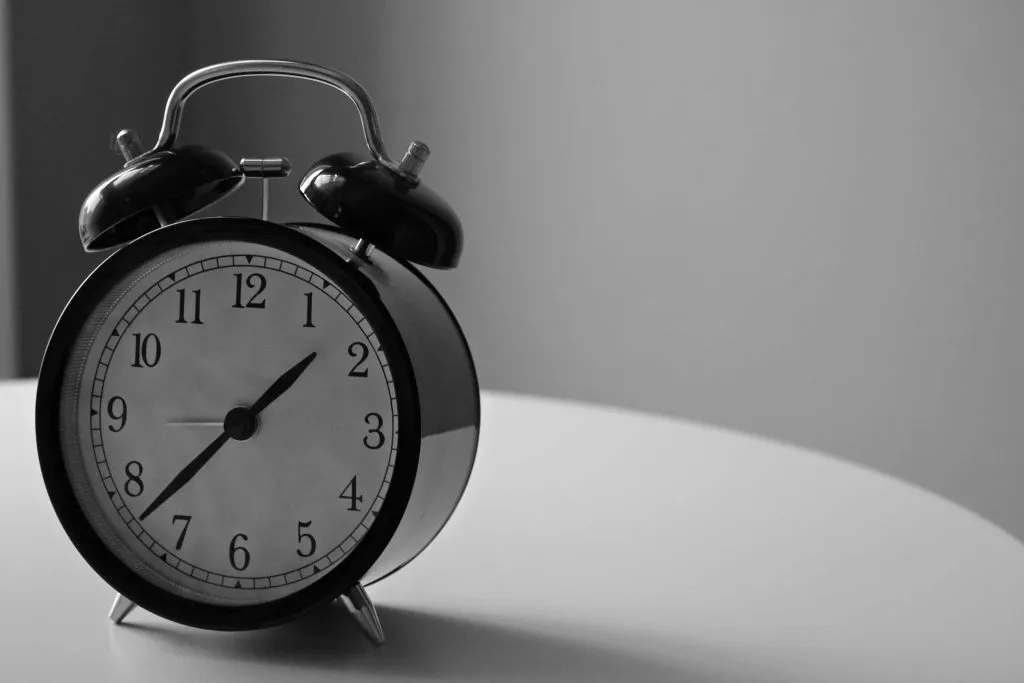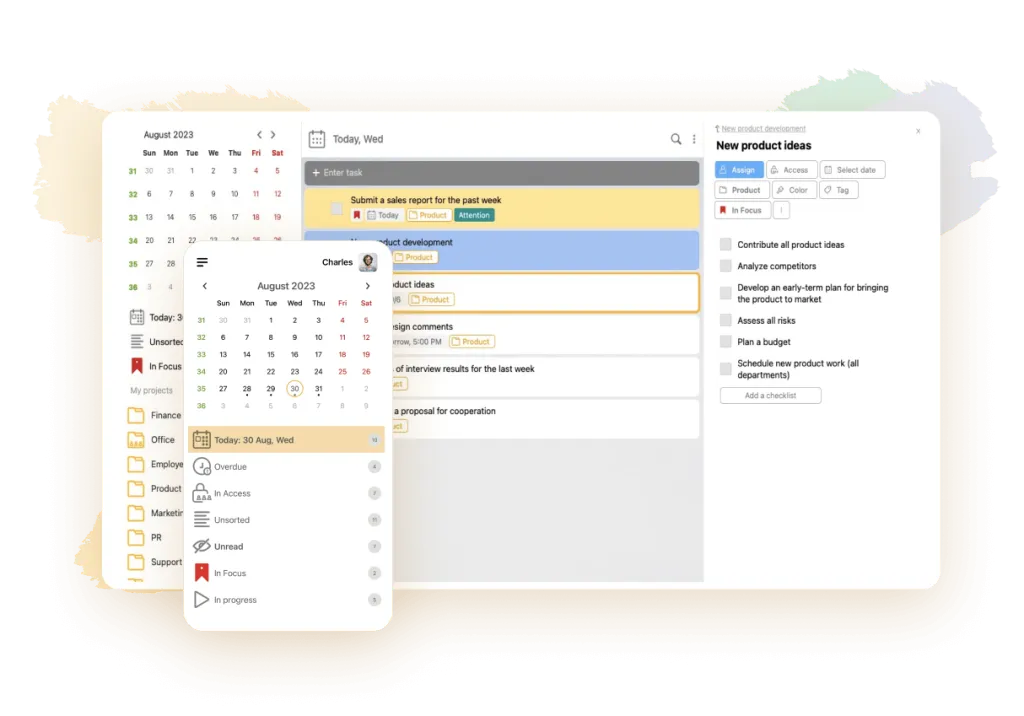
Ted Scott
February 1, 2024
If a team fails to meet a deadline, you need to look for reasons and take action. A fairly simple and effective way of doing this is timekeeping. This is a timekeeping procedure that allows you to visually compare planned time with actual time spent.
Timekeeping helps to identify bottlenecks in the team’s time management and reduce time spent on repetitive tasks. Initially, this method was used in flow production. But due to its high flexibility and adaptability, timekeeping is successfully applied in a wide range of areas.
To begin with, let’s look at the classic approach: how a day’s timekeeping is carried out in production. On the initiative of the company’s management, the speed at which workers perform typical operations is measured. In-house or invited standardizers make observations and record the results. The management draws conclusions based on the data obtained: whether to raise production standards or leave them as they are.
But timekeeping is not only used to re-evaluate standards. In addition to measuring time, timekeepers also take photos of an employee’s workplace and videotape the entire work process. By comparing the technique of performing the same operations by different employees, it is possible to identify both efficient and inefficient practices. Irrational and unnecessary labor practices are eliminated, while the most successful ones are replicated throughout the entire production.
How to work on the timing system

Keeping timekeeping of the day is a responsible element of management activity. To properly analyze the speed of your employees’ work, you need to follow a certain sequence of actions. We have compiled a step-by-step roadmap that will definitely help you analyze the duration of tasks.
Setting timekeeping objectives
Before starting the procedure, it is important to clearly define the objectives of the process and the target group of employees. The objectives can range from performance evaluation to workflow optimization. Determine which activity you want to improve and which employees will be involved in the process.
Choice of tools and approach
Choose an approach and tools for conducting timekeeping. The choice of approach depends on the specifics of your organization, the resources available, and the purpose of the observations. This may include:
-
Use of specialized software. There are many programs and applications designed specifically for timekeeping. They allow employees to easily record time, and managers to track and analyze the data.
-
Manual timekeeping. If you don’t have access to specialized tools, employees can keep time logs manually. It’s important to make sure these records are accurate and updated regularly.
-
Automated timekeeping. Some systems can automatically record work time based on an employee’s computer activity. This can be useful for determining the time spent on specific tasks.
Employee training
Explain to employees how to use the selected tools correctly and how this will improve productivity and efficiency. Training should emphasize that timekeeping is not a means of control, but a tool for self-improvement and more efficient work.
Establishment of a categorization system
Develop a categorization system for the tasks and activities that will be tracked. This will help you organize your data and more accurately analyze exactly what your time is spent on. Categories can include projects, clients, task types, and other parameters that are important to your organization.
Data collection
Start collecting data on the time employees spend on tasks. Depending on the chosen approach, this may be:
-
Making entries into specialized software.
-
Filling in timesheets or time logs.
-
Automatically collect data using activity monitoring tools.
Ensure that staff regularly and accurately enter data to ensure accurate and reliable results.
Creating a results table
A simple spreadsheet will help you quickly analyze employee performance and implement conclusions. Create an electronic document with a matrix that shows the results of observations and set norms. The table allows you to visualize the data and easily manage the norms of task performance. This contributes to better time management in the organization. In our example, we have made the following columns:
-
Task title.
-
Employee or team names.
-
Average time to complete a task for each worker.
-
The normative time to complete a task.
-
Additional parameters or comments if needed.
Analyzing the results
Use metering results to evaluate employee performance and optimize work processes. Compare actual time spent on tasks to expected time based on experience or standards. Identify areas where improvements in productivity and efficiency are possible. If the standard is exceeded, analyze the reasons and propose solutions to the problem.
Taking action
Based on the results of the analysis, take the necessary actions to improve performance and efficiency. These could be the following actions:
-
Workflow optimization.
-
Reallocation of tasks and resources.
-
Providing training and coaching to employees.
-
Making changes to work schedules or priorities.
Monitoring and refinement
Timekeeping is a long-term process that requires constant monitoring and refinement. Continue to track time and analyze data to see if changes lead to improvements. Regularly update your categorization system, train new employees, and adapt to changing conditions.

Optimization of timekeeping of working time
To maximize the effectiveness of timekeeping, the following aspects should be considered:
-
Use of specialized software. There are many tools and applications that simplify the timekeeping process. They allow you to automate data collection and create reports.
-
Employee training. It is important to train employees on the proper use of timekeeping and explain to them the benefits it brings to both them and the company.
-
Eliminating micromanagement. Timekeeping should be a management tool, not a means of micromanagement. Employees should also be given sufficient freedom and autonomy.
Application of timekeeping in various industries
Timekeeping is a powerful tool that has been successfully applied in various industries. Its flexibility and versatility allow this tool to be adapted to the specific tasks and peculiarities of each field.
Business and Management
In business and management, timekeeping is used to evaluate the performance of employees and teams. It reveals which tasks take the most time, which can be useful for resource planning and optimizing workflows. It is important to emphasize that timekeeping not only evaluates but also improves performance by helping managers allocate tasks and resources more accurately.

Production
In the industrial sector, timekeeping helps to optimize work processes at every single stage of production. It identifies bottlenecks where time is spent inefficiently and helps improve productivity. Companies can use timekeeping to determine the time spent on each unit of production, which is important for quality control and meeting deadlines.
Information technology
In IT, timekeeping helps to track the time spent on software development, testing and maintenance. It allows you to determine at which stages of projects the most time and resources are spent. IT companies can use timekeeping for more accurate customer billing and project management.
All these features of timekeeping application emphasize its importance as a tool to improve productivity, efficiency and quality of work in different industries and activities. It allows to analyze and optimize time resources, contributing to the achievement of higher results and level of competitiveness.
Electronic timing on all devices

In the 21st century, it would be silly to time your tasks manually - using a timer on your phone or a manual timer. Everything has been invented long ago: built-in timekeeping, a program for managing your tasks LeaderTask and perfect results.
In LeaderTask you can:
-
Identify major and minor tasks for the coming day.
-
Create to-do lists for the day, week, month and even year ahead.
-
Set a plan for each of the tasks and then get the “fact”.
-
Display an overall plan for the day or even several days ahead.
-
Assign tasks in case you are working in a team.
Electronic timekeeping in LeaderTask works literally “like clockwork”. In order to start counting time for a task, it will be enough just to set the status “in work”, and timekeeping will start its work.
As a result, you will get both the exact number of scheduled minutes and the exact number of minutes that employees spent on this task. Next, use the sample table above to record the results.
You can download LeaderTask Timekeeping to your computer, smartphone and tablet! Just click the button below and install LeaderTask on your device.
Conclusion
In this article, we found out that timekeeping is an effective method to optimize time costs. It allows companies to increase productivity and reduce project duration. It takes time to prepare and verify the results in order to properly and impartially measure and analyze the data obtained. By using this tool, companies can improve their competitiveness and reduce costs.
If you have a small but modern company with a young team, timekeeping can be done very easily. You don’t need official forms, acts, orders and other bureaucracy like in large enterprises. All you need is a stopwatch or a team management app on your phone.








